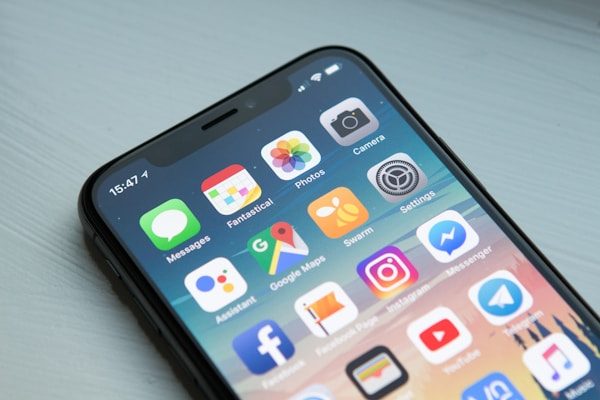Sarah Mitchell
Senior Integration Engineer
Published
Oct 15, 2024

Choosing between Google Wallet and Apple Wallet for your digital pass integration is a critical decision that impacts millions of users. With Google Wallet serving over 150 million Android users and Apple Wallet reaching 500+ million iOS users, understanding the key differences, features, and integration complexities is essential for making the right choice for your business.
In this comprehensive comparison, we'll analyze both platforms side-by-side, covering everything from technical requirements and user experience to market reach and implementation costs, helping you make an informed decision for your digital wallet strategy.
Market Share and User Base
Understanding the market presence of each platform is crucial for maximizing your reach:
- Apple Wallet: With over 500 million active users globally, Apple Wallet dominates in premium markets like North America, Europe, and parts of Asia. iOS users tend to have higher engagement rates with digital passes.
- Google Wallet: Serving 150+ million users across Android devices, Google Wallet has stronger penetration in emerging markets and offers broader device compatibility across various price points.
- Global Reach: Android holds approximately 70% of global smartphone market share, while iOS maintains around 27%, but iOS users typically show higher spending patterns.
- Regional Considerations: Apple Wallet leads in the US, UK, and Japan, while Google Wallet dominates in India, Southeast Asia, and Latin America.
Feature Comparison
Both platforms offer robust features, but with notable differences in implementation and capabilities:
Pass Types and Flexibility
Apple Wallet offers five predefined pass types: Boarding Passes, Event Tickets, Store Cards, Coupons, and Generic passes. Each type has specific layouts and field arrangements that must be followed.
Google Wallet provides more flexible pass types including Transit, Loyalty, Offers, Event Tickets, and Generic passes. Google allows greater customization in layout and design, giving developers more creative control.
Push Notifications and Updates
Apple Wallet supports real-time push notifications directly to the lock screen. Updates are instant, and notifications are highly visible, appearing even when the device is locked.
Google Wallet also supports push notifications with good delivery rates. Updates appear in the notification tray and can trigger wallet actions, though they're slightly less prominent than iOS lock screen notifications.
Location-Based Features
Apple Wallet excels with its location-based pass triggers, automatically displaying relevant passes on the lock screen when users approach a location. This feature has excellent precision using GPS and iBeacon technology.
Google Wallet offers similar geofencing capabilities but with less aggressive lock screen integration. Passes appear in notifications rather than automatically on the lock screen.
Technical Integration Complexity
The technical requirements and implementation difficulty vary significantly between platforms:
Apple Wallet Requirements
- Apple Developer account ($99/year)
- Pass Type ID and signing certificate
- HTTPS-enabled web server for pass distribution
- Understanding of .pkpass file format and JSON structure
- Certificate management and renewal processes
Google Wallet Requirements
- Google Cloud account (free tier available)
- Service account credentials
- REST API integration or SDK implementation
- Understanding of Google Wallet API and JWT tokens
- No annual developer fee required
Design and Customization
Visual presentation and branding capabilities differ between the two platforms:
Apple Wallet follows strict design guidelines with limited customization. You can customize colors, images, and text fields, but the overall layout is predetermined by the pass type. This ensures consistency but limits creative freedom.
Google Wallet offers more flexibility in layout, colors, and field arrangement. You have greater control over the visual hierarchy and can create more unique branded experiences, though this requires more design work.
Cost Comparison
Budget considerations play a crucial role in platform selection:
- Apple Wallet: $99/year Apple Developer Program membership, plus development costs for certificate management and pass server infrastructure.
- Google Wallet: No platform fees (free tier available on Google Cloud), but may incur API usage costs at scale and requires investment in REST API integration.
- Development Time: Apple Wallet typically requires 2-3 weeks for basic integration, while Google Wallet may take 3-4 weeks due to API complexity.
- Maintenance: Both platforms require ongoing maintenance for certificate renewals, API updates, and pass management.
Security and Privacy
Both platforms take security seriously but with different approaches:
Apple Wallet uses cryptographic signing for all passes, ensuring authenticity and preventing tampering. Passes are stored in the device's Secure Enclave, and Apple's strict review process helps maintain security standards.
Google Wallet employs JWT-based authentication and encryption for pass data. Google's infrastructure provides robust security, and passes are protected by device-level security features like Google Play Protect.
Which Platform Should You Choose?
The right choice depends on your specific business needs and target audience:
Choose Apple Wallet If:
- Your target market is primarily in North America, Europe, or premium segments
- You prioritize user engagement and lock screen visibility
- You need strong location-based features
- Your users expect premium experiences
- You prefer a more structured, standardized approach
Choose Google Wallet If:
- You want maximum reach across diverse markets and device types
- Budget constraints are a primary concern (no annual fees)
- You need greater design flexibility and customization
- Your audience is primarily on Android devices
- You prefer API-based integration approaches
Consider Both Platforms If:
- You want to maximize market coverage (recommended for most businesses)
- You have the resources to maintain dual integration
- Your user base is split between iOS and Android
- You're launching a new product or service and want comprehensive reach
Conclusion
Both Google Wallet and Apple Wallet offer powerful capabilities for digital pass distribution, each with distinct advantages. Apple Wallet excels in user engagement and premium market presence, while Google Wallet provides broader reach and greater flexibility at a lower cost. For most businesses, implementing both platforms ensures maximum coverage and the best user experience across all devices.
Need help deciding which platform is right for your business? Contact our team at WePass for expert consultation on your digital wallet strategy.


